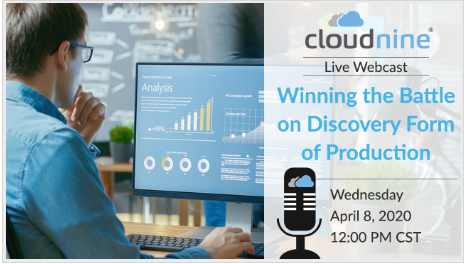Web Teleconferencing Solutions Experiencing Challenges During COVID-19 Crisis: eDiscovery Logistics
We’re all adjusting to our “new normal” of Work From Home (WFH) during the COVID-19 (Coronavirus) crisis. But, working with increased demands on teleconferencing solutions may make us want to say “WTF” during our WFH experience these days. Is there anybody out there?
As reported by The Register (Zoom goes boom, Teams tears at seams: Technology stumbles at the first hurdle for this homeworking malarkey, written by Kieren McCarthy – hat tip to Sharon Nelson of the excellent Ride the Lightning blog), demand for services like Zoom’s conferencing software and Microsoft’s Teams outstripped capacity and outages started occurring at 9am ET on Monday, per the article.
Zoom candidly reported that its software has “degraded performance” and its phone service had a “partial outage.” For obvious reasons, all remote working companies are scrambling to deal with the sudden flood of users. Zoom has updated its audio-conferencing system in the background in order to allow people running the meeting the ability to change dial-in options – a sign that people who usually do not use its software are having to be guided through it by manager and meeting organizers.
Of course, Zoom has been on a media blitz recently touting their low latency, network optimization, decision to remove a 40-minute limit on free accounts and even offering free video conferencing for schools. Whoops. Though the free videoconferencing was a nice offering, so kudos to them for that. CloudNine uses RingCentral (which is built on Zoom) and I have noticed a couple of issues dialing into meetings this week, but was able to circumvent them by using computer audio instead. So, there are workarounds; however, I have heard some people have had issues with the computer audio option as well.
Microsoft, which has been heavily promoting its Teams conferencing service recently, has also had issues, which a string of outages. The service was listed by Microsoft as suffering “degradation.”
Needless to say, the COVID-19 virus crisis of 2020 is giving these teleconference platform providers a chance to stress test their systems like never before.
As you may recall, I covered a few eDiscovery related cancellations, postponements and conversions (to virtual events) in Tuesday’s post. Of course, Rob Robinson’s excellent Complex Discovery blog has a much more comprehensive listing of cancellations, postponements and conversions here, which (sadly) includes the Corporate Legal Operations Consortium (CLOC) show in May as well as events for The Sedona Conference and the Masters Conference.
Stay healthy out there!
So, what do you think? Are you experiencing any challenges during this WFH time for so many? Please share any comments you might have or if you’d like to know more about a particular topic.

Image Copyright © Metro-Goldwyn-Mayer (MGM)
Sponsor: This blog is sponsored by CloudNine, which is a data and legal discovery technology company with proven expertise in simplifying and automating the discovery of data for audits, investigations, and litigation. Used by legal and business customers worldwide including more than 50 of the top 250 Am Law firms and many of the world’s leading corporations, CloudNine’s eDiscovery automation software and services help customers gain insight and intelligence on electronic data.
Disclaimer: The views represented herein are exclusively the views of the author, and do not necessarily represent the views held by CloudNine. eDiscovery Daily is made available by CloudNine solely for educational purposes to provide general information about general eDiscovery principles and not to provide specific legal advice applicable to any particular circumstance. eDiscovery Daily should not be used as a substitute for competent legal advice from a lawyer you have retained and who has agreed to represent you.






